Many people often wonder how many fishes should be used to maintain an efficient and healthy aquaponics system.
When determining the capacity of an aquarium, it is common to look at total fish length or weight rather than the number of fish. The idea is that bigger fish need more room.
In this article, we’ll discuss the Fish stocking density in detail.
Table of Contents
Fish Per Gallon Rule
For a smaller fish species, the most widely accepted stocking rule is that for each gallon of water you raise an inch of fish. This is only applicable for smaller tanks. You cannot follow this rule to stock the fish that have a tendency to grow larger. As the fish grow, it increases in length, width and height. The volume and weight of 10-inches long fish can be more than 100 times of 1-inch long fish.
Hence, the best way to determine the stocking densities more accurately is in terms of pounds. A 6 -10 gallons for every pound of fish is a fairly safe ratio in any type of system. The fish feeds according to their body weight. An adult fish can consume feed equals to the 46–68 percent of their body weight daily. The ratio of fish to feed conversion also known as the FCR is also a popular parameter to determine the efficiency of a fish. Hence, larger fish tend to produce more waste and needs more space. It can be said that a 10-inch fish will eat and excretes a lot more than 10 x 1-inch fish.
These are rough estimates are to avoid any overstocking. You can increase your fish poundage to water ratio to get the most from the least. You may require additional equipment to raise the fish stocking density. An example can be of air pumps to oxygenate your water tank and raise the dissolved oxygen levels. The implication is that you incur more costs and also have to monitor the system more for proper operation and maintenance.
If you have proper aeration and filtration systems in your larger tank, for each gallon of water you can stock up to ½ pounds of fish. However, this also depends on the species of fish. Some fish need more room than others.
Over-stocking of fish is one of the common mistake people make in aquaponics. It can lead to stunted growth for the fish and can even lead to fish loss due to high nitrite levels.
To better understand what best suits your needs, try being creative with your fish stocking density. Let’s dive into details of stocking density and the ways of increasing it. When all is said and done, you want your fish to live in a comfortable environment.
Factors Effecting Stocking Density
You need to maintain the optimal minimum water quality requirements for your fish to ensure a comfortable environment for them. It depends upon the capacity of your system to handle waste vs. the capacity of your animals to produce it, and as the other answers say, there’s no simple fish:volume formula that Just Works. It depends on the following factors.
1. The Fish Type and Size
The number of fish you are able to keep in your tank largely depends on the fish type you have chosen. Their temperament, adult size, and water quality requirements influence the possible fish stocking density.
It is possible to stock certain fish like tilapia at higher densities because they are hardy. Some fish are extremely territorial yet they may be great for your tank in terms of bioload. The only consideration is that you may not have enough space to keep enough distance between themselves. Some fish like trout needs high-quality water.
Read more about trout in aquaponics and tilapia aquaponics.
Then, there are those that perform better in schools and need a lot of open room to cruise in. Some fish live alone otherwise they fight each other (i.e. betta fish). Check more information about betta fish here.
Be sure to make preparations for both adult behaviors and size. Putting an Arowana or a red-tailed catfish in a 10-gallon tank simply because it was just a few inches in size in the pet store will turn out to be a bad idea. Read more about the factors to consider while choosing fish for aquaponics here.
It is always a great idea to make a compatible combination of fish species that have similar water quality requirements and better get along with each other. Check the best fish to use in aquaponics here.
2. System Design and grow media
This is crucial factor to determine the number of fish you can keep. There are 6 types of grow bed designs in aquaponics. All differ in the way they deliver the nutrients to plants. Some include growing media and some don’t.
Having growing media in the system provide space for the bacteria to colonize on its surface. That’s why choosing the right growing media is very important. Read about the things you should consider while choosing aquaponics growing media here.
Growing media in the system acts as a mechanical filter to remove solid waste. With no growing media, 20L of gravel per fish is probably the maximum safe stocking density for fish such as Trout, Barramundi, Silver Perch etc, in an established system. Higher stocking densities could be achieved with mechanical filtration.
3. Water Quality
Water quality matters a lot in the capacity of the system to stock fish. The key to this all working is adequate DO (dissolved oxygen) in the water.
You should have and use a DO meter regularly to monitor DO levels. As ample DO is required for fish waste conversion to plant nutrient along with other water chemistry measurements.
pH is the main parameter of Water Quality. With an increase in the size of fish over time, pH starts to drop below 7.0.
With increasing Ammonia levels, the bacteria stop reproducing. An immediate but short-term fix to this is water exchanges. To bring the pH back to normal levels, you can also add in more Potassium Hydroxide (KOH) and bacteria. This also brings down the ammonia to levels that are safe.
Season and Water temperature indirectly affects fish density. As the sun crosses the equator, you may need to change the number of feedings per day.
Compared to both fall and winter where there are only 3 feedings, spring and summer both have 4 feedings because the days are longer. The result is that fish eat more food and there is more waste in the system. With faster fish growth rate and more nutrients available for the plants, you need to monitor the DO levels as the warm water contains less dissolved oxygen (DO), which can be problematic.
4. Filtration Capacity
The filtration is an important factor that determines the aquarium capacity to support fish. A 40 gph filter will process all of the water in a 10-gallon tank for 4 times in one hour.
In an aquaponics system, you are solely dependent on plants that act as a biofilter to recycle the waste. Your system must have the same rate of nutrient production and absorption. This is very crucial to ensure good water quality for fish. Some plants have a high nutritional requirement and others need a low amount of nutrients to grow. Read more about Aquaponic fish to plant ratio here.
The system can be customized to maximize one of either vegetable growth or fish growth but not for both. Some techniques to maximize fish growth include removing fish solids, keeping fish water warm and adding pure oxygen to water, as done in aquaculture. These are among the determinants of what you intend to achieve in your system. Warm water, for example, is not conducive to the growth of vegetables.
6 ways to increase Fish Stocking density
Keeping it simple is important if you’re a beginner. It’s true that certain aquaponics systems can support or produce more fish per gallon of water as you may have read but, as with many things, this is usually what only complex and advanced can carry.
1. Increase filtration
By increasing bio-filtration (more grow beds), You can decrease the water to fish ratio to keep more pound of fish in lesser gallons of water. With a decrease of bio-filter volume, you may also need to keep less fish or control the parameters that produce more waste.
2. Decrease Fish Feeding
Decreasing the amount of food fed to the fish is also a way to increase fish density. This may cause retardation in their growth, which, once they are fully grown may be desirable. The capacity of the system to support the number of fish is more concerned with the amount of biofilter volume than the size of the fish tank. Hence, The most direct concerning ratio is between the portion of digested food and the size of biofilters. You must plan for proper system design and selection of other system components.
3. Automate the Feeding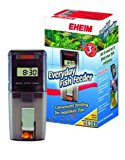
Having an automatic fish feeder to regulate the feeding process is the most incredible way to make the waste of fish more predictable and on-schedule. The feeders with multiple-event per day timer can be set to dispense the same amount of food 3 to 4 times per day. You can adjust the food dispensed as is needed and also be sure that they will be fed even if you have to leave for a few days. It is highly recommended to automate the feeding, as the growing fish needs more feed.
4. Keeping it clean
Removing fish solid waste from the system is yet another way to increase fish density. It relieves some dissolved oxygen getting consumed by decomposing fish feed. Moreover, This reduces the amount of ammonia in the system and the resulting nitrates that are nutrients for plants. You can provide ample aeration and add heterotrophic bacteria weekly if you want to leave the fish solids.
Your plant feeds on what you feed your fish as the minerals and nutrients in the fish food make their way into the plants through the solid waste mineraliztion process.
5. Increase DO
With the growth of your fish and a resulting increase in the amount of food fed to them, Dissolved oxygen in water decrease over time. This also affects the nitrification process. While making your DO measurements, you also have to account for the water temperature as the DO is a product of it too. Increasing aeration in the fish tanks by putting more aerators in the grow beds can become necessary. With this done, The increased DO level are good for the mineralization of the fish waste solids and the nitrification of the ammonia in the system..
It is highly important to constantly monitor the quality of water and adjust both the amount of food fed to the fish and the pH.
6. Growing media and system design
It is recommended to design a system which provides maximum growth rate for both fish and plants.
Most optimal system design is flood and drain (ebb and flow design. The drain and flood cycles allow the surface of the media to inhibit the bacteria and properly aerate plants roots. The draining and re-flooding almost cover the whole crucial part of the entire system which is not possible in other types of the system even with good aerators.
The growing media you choose is very important. Hydroton clay pebbles are recommended.
Check the list of all Aquaponics growing media here
Conclusions
To summarize, increasing your fish density will produce more nitrates and needs more filtration, aeration, and space. In aquaponics, you can keep more plants to curb this problem. As the density increases, however, the system becomes less stable and requires more timely attention. This is true for a system of any size and type.

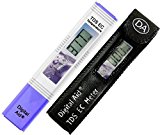
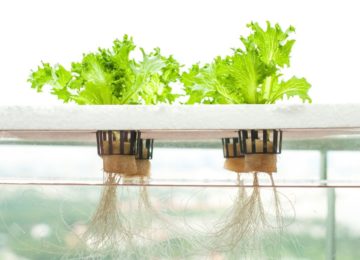
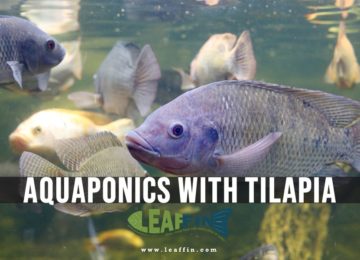
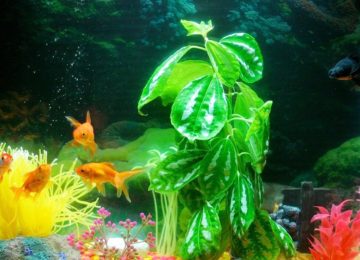
Hi
Thanks for the great information
Its possible to use concrete pond for the fish ? Ihave 10*5 concrete pond